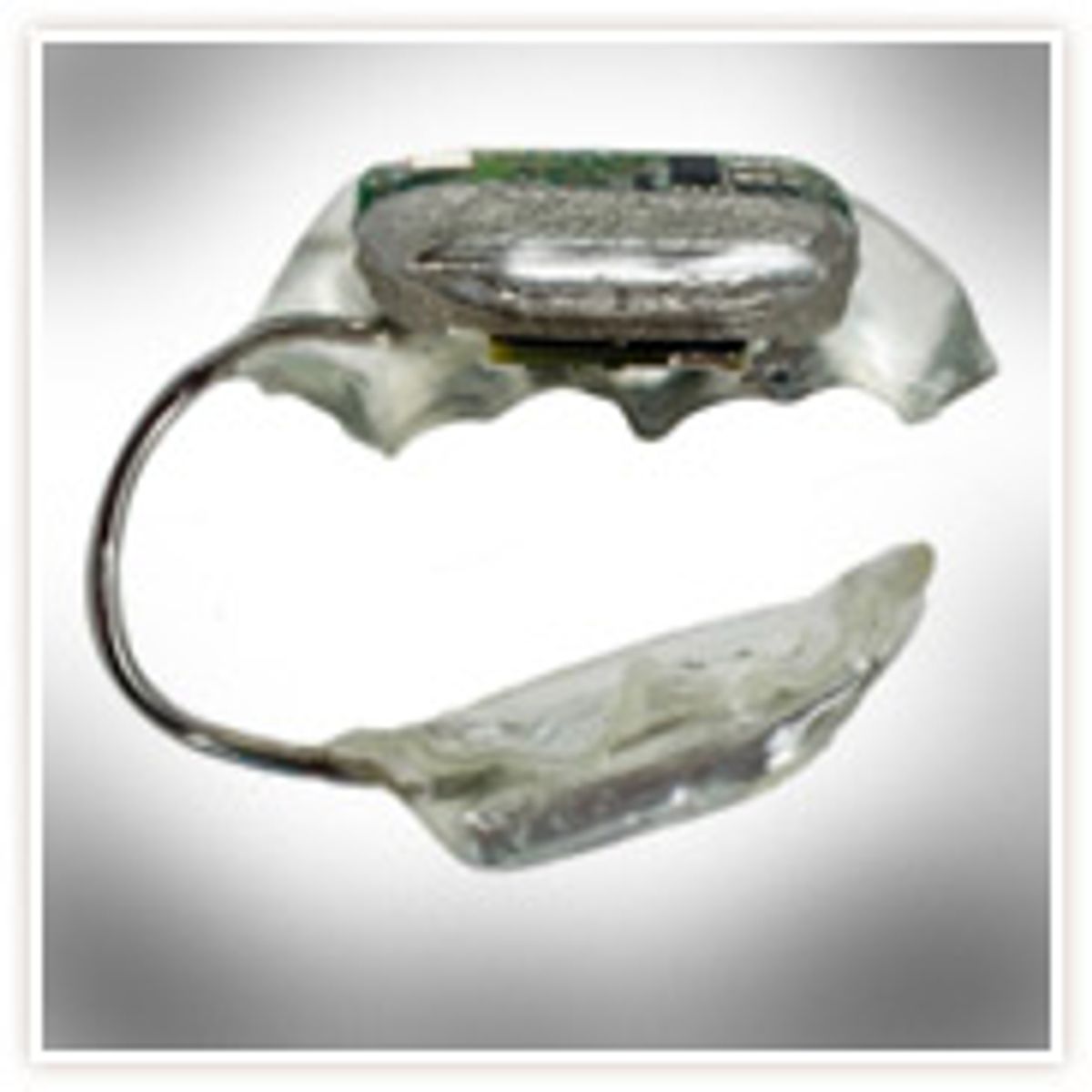A company in California is developing a hearing aid that will attach to the upper molars and transmit sound through a patient's jaw.
The SoundBite, as it's called, has two components. The first, a small microphone sitting in the ear canal, records vibrations that it relays to a transmitter resting on back of the ear. These two pieces are attached by a small transparent wire. The second part of the device clamps onto the back of the top row of teeth like an acrylic mold. A receiver detects signals from the transmitter behind the ear and converts them into vibrations strong enough to carry through the teeth and jaw, but weak enough that the wearer can't consciously feel them.
In a healthy person, air vibrations travel down the inner ear and create patterned disturbances in air pressure that in turn disturb the fluid of the cochlea. Little hair-like cells (called...hair cells) respond to the fluctuations as a spectrum, which the brain then sorts and deciphers as the audible frequencies of sound. The process is one of the most elegant in the body and utilizes the smallest bones in our body. (Take a look!) Tiny, tiny structures convert air vibrations, to fluctuations in air pressure, to wave patterns in fluid, to electrical impulses.
One of the main problems with bone conductive hearing aids has been keeping them anchored to the bone. The latest approach to doing this has been to surgically implant the hearing aid into the bone surrounding the ear.
SoundBite seems to be an attempt to circumvent the need for surgery, and indeed devises a reversible solution. But there are a lot of other problems that I imagine surfacing when we invite technology into our mouths. Images show that the device hides almost completely in the back of your mouth. So, great. That solves some cosmetic concerns. But what about eating? What about talking? What about keeping it clean? What about talking to, and hearing, your dentist while you're getting a root canal?
Also, people already report poorer sound quality with bone conductive hearing aids than with air conductive ones. Will the quality further deteriorate when the vibrations are coming all the way from the teeth and jaw bone?
As always, clinical trials will be the only way to find out, and the company, Sonitus Medical, is just beginning with that.




